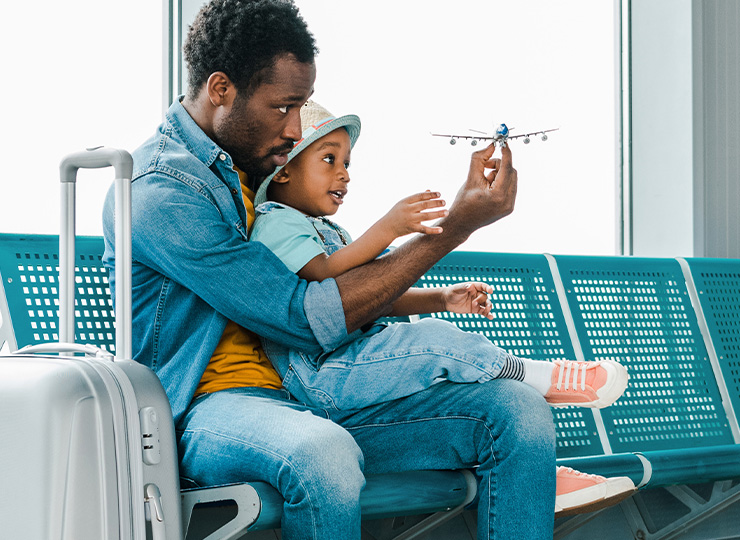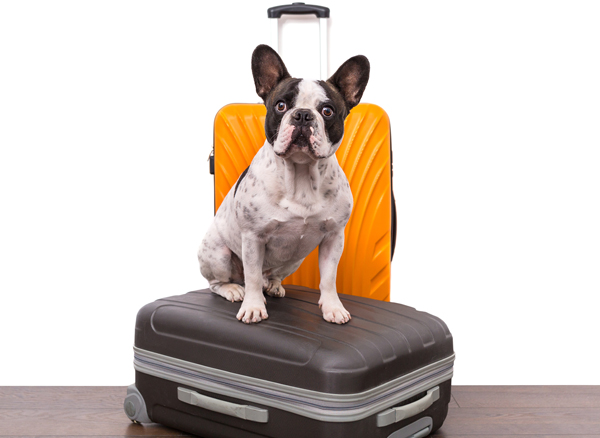

From check-in to take-off: How airports are evolving to enhance the passenger experience
Airports have evolved, listening to customers and adapting their services to enhance the passenger experience. They have moved from infrastructure providers to businesses focused on the airport passenger experience. In regions with more than one airport to choose from, setting themselves apart from their competitors is important to retaining repeat travelers. IATA forecasts that traveler numbers will surpass 2019 totals by 11% in 2025, so airports need to prepare for it if they are not already.

Moving to a service provider mindset, airports have been able to demonstrate their resilience during times of crisis by working with varied stakeholders, whether it be airport operators, airlines, ground handling, retailers, and government agencies, to come together and align to deliver a safe, efficient and memorable experience.
Airports are moving towards technology and service solutions that accommodate contactless movement, improve the speed at which travelers can transit through airports, and provide flexibility and accessibility to help alleviate any stresses associated with travel.
Understanding the traveler sentiment
One way that airports are learning more about traveler sentiment is via surveys. Airport Council International’s (ACI) airport service quality (ASQ) is a global benchmarking program that measures passenger satisfaction during travel through an airport.
The program reaches 60% of the world’s 8.8 billion annual passengers, and its surveys are conducted at more than 400 airports in more than 90 countries and are available in 50 languages.
In 2022 ACI announced the launch of the new highest level (5) of its Airport Customer Experience Accreditation program, with the Republic of Korea’s Incheon Airport as the first airport in the world to achieve this top level of accreditation. The program guides the airport ecosystem in becoming customer-centric and improving the overall airport experience.
Efficiency gains through AI and machine learning
AI in airports is becoming more prevalent to ensure the efficient movement of people, equipment, and baggage. One of the primary ways AI is being utilized is through passenger analytics, which employs video and IoT technology to monitor passenger traffic and movement. By using machine learning models to analyze this data, airports can improve the management of lines, allocate resources at security checkpoints in real time, and predict the busiest times for airport retailers.
Computer vision
Another emerging application of AI in airports is computer vision, which uses cameras and machine learning algorithms to monitor ground servicing activities, detect safety issues, and sound alarms if a service is taking longer than expected. London Gatwick is one of the first major airports to use this technology to increase aircraft turnaround times and improve safety conditions for ground crews.
BagsID utilizes rapid computer vision and AI to recognize bags, significantly streamlining the traveler’s journey. Their technology features a read rate of 99.4% and above and is more cost-effective per bag than radio-frequency identification (RFID). By implementing the technology, airports and baggage handling suppliers can save money and reduce their environmental impact.
AI-powered biometrics
Self-service check-in kiosks were just the first step in automating the passenger journey. Airports are now implementing end-to-end solutions across terminals, expediting the travel flow from check-in to boarding. For example, smart systems such as Fly to Gate by Thales utilize biometrics technology and document scanners to recognize and verify travelers at security.
In the coming two years, many major airports are expected to adopt biometric ID management with future investments in departure and boarding gates. The most common application of biometrics is facial recognition, which is already being used at several airports for customs clearance. Passengers can use facial recognition scanners to verify their identity at TSA checkpoints, self-service kiosks, or boarding gates.

According to a SITA report, nearly three-quarters of airports invest in biometric ID management solutions for passengers measuring physiological characteristics, reducing the need for physical documents and face-to-face interactions with staff. Further, IATA reported in its 2022 Global Passenger Survey, that 75% of passengers would be willing to use biometrics instead of passports or boarding passes to improve airport processes.
The future of self-service technology has evolved and will continue to evolve, where fingerprints, facial recognition, and retinal scanning will likely become mandatory for airport security checks. While biometrics is not new technology, it is ever-evolving to automate the passenger experience, making it efficient, safe, and contactless. Importantly, passenger acceptance of the technology is growing.
Looking to maximize the airport passenger experience for your travelers?
Airport passenger experience and customer service solutions
Airports constantly seek ways to enhance the traveler experience and make their terminals more inviting and comfortable. This includes incorporating art and local culture and designing spaces connecting passengers to the local environment. A great example is ‘Hello, Changi Precinct’ launched in 2022 to create awareness of the Changi Precinct at Singapore’s Changi Airport. The goal is to create a welcoming atmosphere and make the airport a destination in its own right rather than just a transit point.
Heathrow airport announced the ‘Here to Help’ program after seeing the equivalent of 40 years of growth in just four months last year. The program saw 750 members of its non-operational staff volunteering to improve the traveler experience during transit. These are just some examples of many that airports worldwide are implementing to make the airport experience more convenient, comfortable, and enjoyable for travelers.
Creating a favorable impression
Cities are investing in creating a positive impression for those traveling through by building larger art budgets into airport renovations. Programs such as Percent for Art are helping cities like New York and Houston incorporate art from local artists in their renovations, like LaGuardia Airport’s $8 billion upgrade or the Houston Airport System’s public art collection. Additionally, airport architects are exploring ways to connect traveler experiences to the local environment and culture, taking inspiration from places like Singapore’s Changi airport, which features an indoor rainforest and the world’s largest indoor waterfall.
Accessible services
Roughly 15% of the world’s population lives with a disability. It is important that all travelers have a great customer experience and that all needs are catered for when transiting through an airport. Airports are implementing great initiatives and services to make the traveler experience accessible. One example is London City Airport which implemented Recite Me assistive technology on its website to change how travelers read and understand content online. The Recite Me’s assistive toolbar lets travelers with a wide range of disabilities and impairments, from dyslexia to sight loss and color blindness, easily access their content. The accessibility assistive toolbar text provides a wide range of customizable features such as text-to-speech functionality, reading aids, and a translation tool with over 100 languages.
Airport passenger experience and comfort
Airports, especially those handling international travel, recognize the importance of passenger comfort during transit and are taking steps to improve the overall travel experience. This includes providing more comfortable seating options such as padded chairs, benches, loungers, quiet zones, sleeping pods, and relaxation areas.

In addition, airports are increasing the availability of charging stations for electronic devices and offering USB charging ports and wireless charging options. Amenities such as lounges, spas, shower facilities, and airport fitness and wellness centers are also being added to enhance the airport experience and make it more comfortable for passengers.
Airports around the world are continually evolving to enhance the passenger experience in airports. This includes a focus on technology such as self-service kiosks, mobile check-in, and biometric identification to speed up the check-in and security process. Additionally, there is a growing trend of airports investing in amenities such as lounges, spas, and shopping centers to provide travelers with a more comfortable and enjoyable experience while they wait for their flights. Overall, airports are working to provide a seamless and enjoyable enhanced passenger experience for travelers, from the moment they arrive at the airport until they board their flight.



